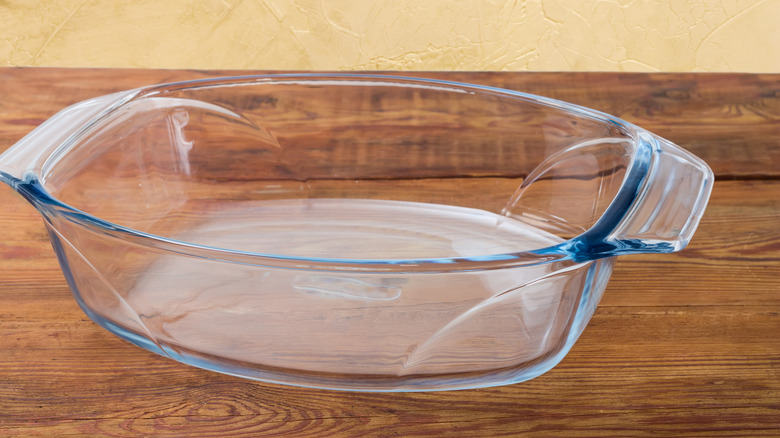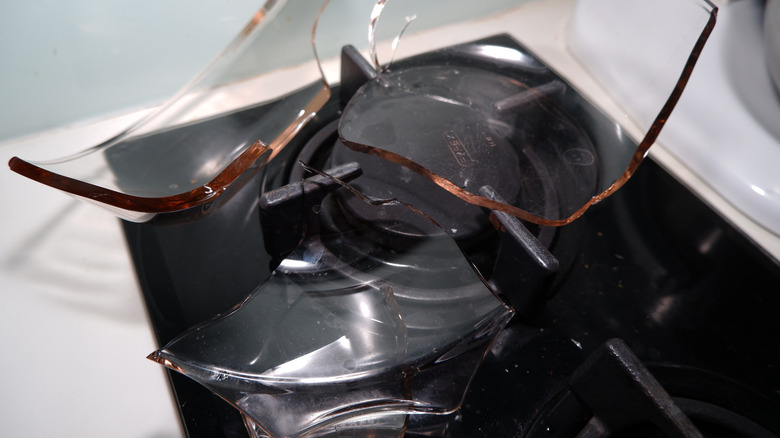Can You Put Pyrex On A Hot Plate?
Homemade Cobblers. Casseroles. Soups. Pies. All presented in that nearly indestructible glassware we've been eating out of for ages. Even though it's a brand name, Pyrex has become synonymous with home cooking and hearty family meals. Generations of home cooks have been pulling Pyrex out of ovens, plunking it down on their home's dining room table, and presenting it at potlucks. A great Pyrex even gets passed down as a family heirloom, discussed on vintage collector sites, and we can never forget how one beloved design caused major eBay drama. Pyrex is a true staple of Americana.
How has Pyrex withstood the test of time? Mainly because of its unsurpassed durability. Pyrex was invented by Corning Inc. in 1915 as the first home cookware to be made with temperature-resistant glass. This innovative material was called borosilicate glass and was originally used for scientific laboratory equipment and railroad lanterns. Fortunately, someone had the great insight to translate this technology into kitchen use, as well. These days, Pyrex is made of tempered glass, rather than borosilicate, which is more resilient that ordinary glass. If broken, it produces fewer sharp pieces.
Is there anything Pyrex glassware can't do? Turns out, the answer is yes. Pyrex does actually have some limitations that you should know about when using it under intense heat.
Pyrex comes with warnings regarding heat and breakage
As indestructible as we may believe Pyrex to be, it's not made of magical materials. Anything that gets too hot is susceptible to breakage, Pyrex included. One of the great things about Pyrex is that it can go from the dishwasher to the fridge to the microwave or oven (up to a temperature of 425 degrees). However, Pyrex's online safety and usage instructions include this stark warning: "Don't subject glass to sudden temperature changes or direct heat sources."
This means Pyrex should never come into direct contact with any type of heating element. That includes stove top burners, your oven's heating element ... and yes, hot plates. The manufacturer's usage instructions go on to spell it out very clearly by saying the following: "Do not use Pyrex glassware on the stovetop (open flame, electric burner), under the broiler, in a toaster oven, or on a barbecue grill. This type of usage exposes Pyrex glassware to potentially damaging direct heat sources."
While you may have heard stories of some people successfully putting Pyrex on hot plates, the manufacturer strongly warns against it. For heating foods on a hot plate, it's best to stick with metals and avoid anything that could shatter or melt. In the off-chance that you make a mistake and your beloved Pyrex dish suffers breakage, the manufacturer suggests you wear thick gloves and take great caution in the cleanup effort to avoid getting cut on potentially sharp glass shards. When used properly, though, your favorite Pyrex glassware should last a lifetime (or longer).

